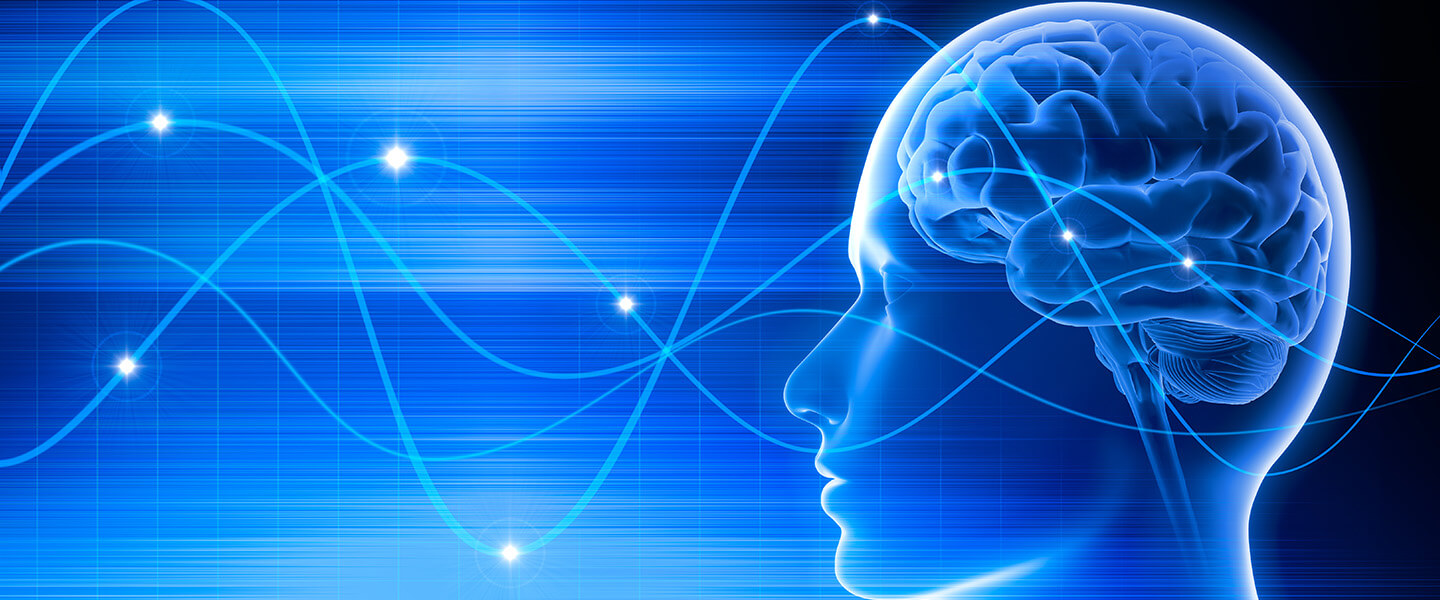tDCS Non-Invasive Brain Stimulation Fares Well in Trials for PTSD and Major Depression
tDCS Non-Invasive Brain Stimulation Fares Well in Trials for PTSD and Major Depression

Results of two recently published clinical trials demonstrate the versatility and potential effectiveness of transcranial direct current stimulation (tDCS) in reducing symptoms of psychiatric illness, specifically, in PTSD and major depressive disorder. BBRF grantees co-led both trials, which were entirely independent of one another.
tDCS is a form of non-invasive brain stimulation. It is less powerful than the most widely used form of non-invasive stimulation, TMS (transcranial magnetic stimulation) and rapid-acting variants such as SAINT (Stanford Accelerated Intelligent Neuromodulatory Therapy). SAINT is based on intermittent theta-burst stimulation (iTBS), a specific form of TMS. Both TMS and iTBS-based approaches were pioneered by BBRF grantees and have been approved for treatment of depression. Both must be administered by trained professionals in a medical facility.
tDCS applies a weak direct current (0.5 to 2 milliamperes) to the scalp via two electrodes, typically held in place by rubber headbands or embedded in a cap worn by the patient. Placement of the electrodes varies, depending on the part of the brain being targeted. The direct delivery of electrical current albeit in very small amounts contrasts with TMS and iTBS-based therapies, which apply magnetic pulses to brain areas just beneath the scalp to modify nerve cell activity. The direct current of tDCS is thought to alter the excitability of brain cells beneath the scalp, but does not directly trigger nerve cell firing or inhibition as in TMS. Unlike some forms of iTBS such as the SAINT protocol, tDCS is not rapid-acting.
In JAMA Psychiatry, a team co-led by Noah S. Philip, M.D., a 2024 BBRF Distinguished Investigator, and Mascha van ’t Wout-Frank, Ph.D., a 2010 BBRF Young Investigator, both of Brown University, reported encouraging results of a double-blinded, randomized, placebo-controlled trial using tDCS to treat U.S. military veterans with warzone-related PTSD.
At the VA Providence (RI) Healthcare System, 54 veterans who had chronic PTSD and warzone-related exposure were recruited for the trial. Most of these participants, whose average age was in the mid-40s (about 95% white males, 85% non-Hispanic) had psychiatric comorbidities (including major depression, substance-use disorders, panic and anxiety disorders); over one-third had experienced mild traumatic brain injury and had a history of suicide attempt; over half had been hospitalized in the past for psychiatric illness; and nearly one-half were considered disabled. Only some had been directly involved in combat, but all had traumas stemming from experiences in the combat zone.
These individuals were randomized into two groups: 26 received active tDCS which was delivered during six 25-minute sessions of virtual reality-based exposure therapy sessions given over a period of 2 to 3 weeks. tDCS was delivered at 2 milliamperes via a rubber band over the forehead, with the anode targeting the brain’s ventromedial prefrontal cortex (vmPFC). Twenty-eight participants received a placebo (“sham”) version of tDCS that was designed to be indistinguishable from active tDCS; no electricity was delivered to the scalp. All 54 participants received the active/sham tDCS while they were receiving a form of virtual reality (VR) exposure that was designed to be immersive yet not based specifically on each participant’s traumatic experience(s); rather it was designed to incorporate “broadly shared traumatic experiences.”
This non-individualized VR exposure was chosen so that results could be measured against a single VR standard. When the “exposure” is individualized and thus varies from participant to participant, it introduces an element of variation that complicates interpretation of group results.
Active tDCS simultaneously delivered with VR exposure, relative to the “sham” version, did yield “significantly meaningful” reductions in PTSD symptoms, measured by a standard, self-report scale—improvements that were observed to increase over time. Those in the active tDCS group experienced enhanced psychophysiological habituation to VR warzone cues, which the team suggested may indicate that the combined treatment facilitated learning and memory, and helped patients both anticipate their fears and learn how to extinguish them. PTSD symptoms continued to improve over time in the active tDCS treatment group over the month following the end of treatments. The results at 3 months were harder to interpret due to dropouts from the participant group, lowering the statistical power of the numbers. Nonetheless, the active tDCS treatment also showed significant and meaningful improved social and occupational functioning at 3 months. Adverse effects were mild and typical for tDCS—most often, tingling or itching and skin redness under the electrodes.
Given that both parts of the active treatment (tDCS during VR) are inexpensive and “accessible,” the team said that if the current results are replicated in much larger groups, this brief tDCS-augmented VR intervention might be widely applied, including perhaps in home-based use.
The second recently reported tDCS trial explored home-based tDCS in the treatment of people diagnosed with major depressive disorder. In a fully remote, phase 2, randomized, placebo-based study, researchers tested a 10-week home-based course of tDCS. Leaders of the study included Cynthia H. Y. Fu, M.D., Ph.D., a 2006 and 2002 BBRF Young Investigator; Allan H. Young, M.D., Ph.D., a 2000 BBRF Independent Investigator; and Jair Soares, M.D., Ph.D., a 2002 BBRF Independent Investigator and 1999 and 1997 Young Investigator.
The team reported results of their trial in Nature Medicine. They recruited 174 participants, average age in the late 30s, and equally divided them into two groups. One received 5 self-administered active tDCS treatments per week for 3 weeks, then 3 sessions weekly for 7 weeks. The other group received a sham version of the same treatments. Then, in a second 10-week period, all participants received active tDCS. Each tDCS session lasted 30 minutes. The anode of the device was placed over the location on the scalp corresponding with the brain’s left dorsolateral prefrontal cortex (DLPFC); the cathode was placed over right DLPFC. tDCS was delivered at 2 milliamperes, the same strength as in the PTSD trial.
tDCS is amenable to self-administered home use, the team said, since it has proven both portable and safe in many past tests. “We developed a protocol that provides homes-based tDCS with real-time remote supervision using videoconferencing.” The team was accessible to all participants on a 24-hour basis throughout the trial. Being in contact with the doctors is important in home-based tDCS, the investigators stressed, as problems such as burning of the skin have been reported when the device is improperly placed over the scalp.
The participants in the trial were at least moderately depressed—their average score on a standard scale called HDRS was 19 (below 16 is considered “mild” and above 24 “severe”). About one-third were not receiving current treatment; two-thirds were taking antidepressant medication and about 15% were in psychotherapy.
The group receiving the active tDCS treatment experienced “a significant improvement” in depression symptoms as measured by the HDRS score; the average decrease in score was 9.4 points and the score after 10 weeks was 9.5, on average. Those receiving placebo also improved: an average decrease of about 7 points and a score after week 10 of about 11.6. But the response rate to the active treatment was also significantly greater: nearly 60% for those receiving tDCS compared with about 38% for the placebo group. 45% in the active group had a remission after 10 weeks, compared with about 22% in the placebo group.
The significantly better results in those receiving active tDCS was also reflected in other depression rating scores as well as in a score based on patient self-reports. Meaningful efficacy was seen in both first-episode depressed participants as well as those with chronic and treatment-resistant major depression.
The second 10 weeks of the trial, in which all participants received active treatment, helped to keep as many participants as possible in the trial until the conclusion. While there were no serious adverse effects of active tDCS, active stimulation was associated with higher rates of skin redness, irritation and dry skin compared with sham stimulation.
In the view of the researchers, the 10-week course of tDCS as tested against placebo in this trial is evidence supporting its consideration as a first-line treatment in the future, although under the assumption that any home-based treatments will include ongoing safety monitoring by consulting medical personnel.





